Detailed explanation of China's modern and contemporary news and publishing museum, opening! Shanghai adds another heavyweight museum: Modern | News Publishing | Museum
On the afternoon of June 29th, walking into the China Museum of Modern and Contemporary Press and Publication located at 3678 Zhoujiazui Road, Yangpu District, people from all over the country and the news and publishing industry in Shanghai were filled with excitement. After years of appeals, site selection, and construction, this first domestic news and publishing professional museum held its opening ceremony and will officially open to the public for free on June 30th. From the opening date to August 31st, a reservation visit mechanism will be adopted, and subsequent adjustments will be made dynamically based on passenger flow.
After its opening, the China Museum of Modern and Contemporary Press and Publication will adhere to the principle of "deeply cultivating tradition, facing the world, and embracing the future", showcasing the historical and cultural achievements of press and publication with innovative ideas, heavy physical objects, and diverse means. It will become a professional press and publication museum that integrates "collection and protection, exhibition and display, academic research, public education, cultural exchange, and industrial innovation".

The "Library" in Museums: The Largest Single Cultural Relic in the National Publishing System
The China Museum of Modern and Contemporary Press and Publication has a building area of 10000 square meters and a display area of 5640 square meters. It is divided into one theme hall and five branch halls, covering topics such as general history of press and publication, printing technology, children's publishing, art design, digital publishing, audio-visual publishing, and more. Six exhibition halls display a total of 766 pieces/set of various exhibits since the end of the Qing Dynasty, including books, journals, newspapers, records, celebrity manuscripts, document archives, production tools, etc. Among them, a "library" and a "newspaper street" are particularly impressive for the profound history of China's modern news and publishing industry in Shanghai.

Passing through the entrance gate from the preface hall, the old collection library of Zhonghua Book Company, located on the south side of the first floor of the museum, is presented to visitors through floor to ceiling glass. The 170000 volumes of books use the original book classification system and bookshelves, innovatively restoring and showcasing the old library of Zhonghua Book Company. Among these collections, there are both red literature such as "New Youth", as well as nearly 800 photocopies of the copper movable type "Collection of Ancient and Modern Books" in the fourth year of the Yongzheng reign of the Qing Dynasty, which were collected by Kang Youwei.
Old Collection Library of Zhonghua Book Company
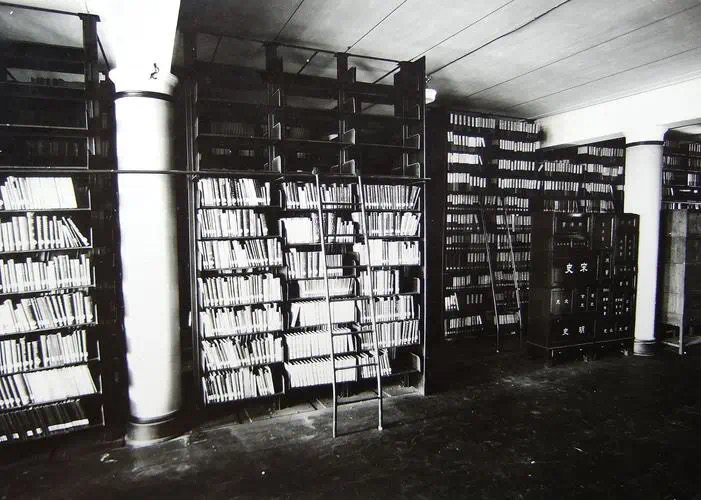
The collection of books in the library of Shanghai Dictionary Publishing House is an important historical literature resource of the Shanghai publishing system, as well as physical evidence of Shanghai publishers holding public libraries, promoting education, and saving the nation a hundred years ago. Especially during the January 28 Incident, the Oriental Library, the largest library in the Far East established by the Commercial Press, was destroyed in the flames of war, making the original collection of books in the Zhonghua Book Company Library the largest single cultural relic in the national publishing system, demonstrating its preciousness.
Zhonghua Book Company was founded in Shanghai in 1912. At that time, on one hand, the book company purchased a large number of reference books, rare ancient books, inscriptions, paintings, and Western language books to meet the needs of editors and printers. On the other hand, new book copies were prepared for retention and borrowing. At the beginning of its establishment, the "Library" of Zhonghua Book Company gradually became saturated, and the "Zhonghua Book Company Library" was established in 1916. In the 1920s, with the vigorous development of the "New Library Movement" in modern China, the founders of Zhonghua Book Company, such as Lu Feikui, quickly incorporated the development of the library industry into the overall development plan of the book company. In 1925, Dai Maozai, the then director of the editorial office, invited library science expert Du Dingyou to guide the work of book classification. According to the Du's Book Classification System, more than 60000 books in the collection were classified and cataloged into accounts, equipped with classification cards and borrowing cards. They were shelved by category, establishing a modern library with modern functions. The library building was officially renamed the "Zhonghua Book Company Library". In 1930, publisher Shu Xincheng was appointed as the director of the editorial office and library of Zhonghua Book Company, responsible for purchasing a large number of valuable Chinese and Western language books, rare books, local chronicles, newspapers and magazines, reference books, and textbooks published by various book companies. Within a few years, the collection of books increased to over 100000. In 1935, the library of Zhonghua Book Company and the book company were relocated to the new factory on Macau Road, and a large number of steel bookshelves designed and manufactured by Shanghai Dahua Iron Works were customized. The nameplate of Dahua Iron Works is still clearly visible on the original shelf preserved in the museum today.
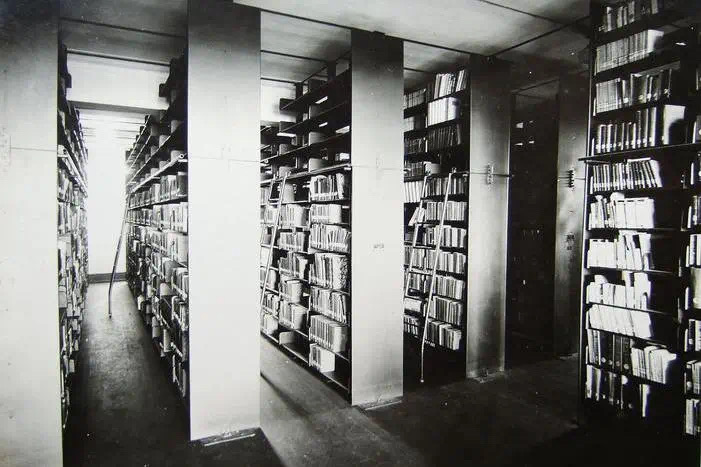
Old photos of Zhonghua Book Company Library
In August 1937, the Battle of Songhu broke out. In order to protect the collection of rare and rare books from the ravages of war, the library of Zhonghua Book Company organized manpower twice to pack over 700 boxes of books and store them scattered in various places. Since 1937, the library has been rescuing more than 30000 scattered ancient books among the people. By the time Shanghai was liberated in May 1949, the collection had reached over 500000 books.
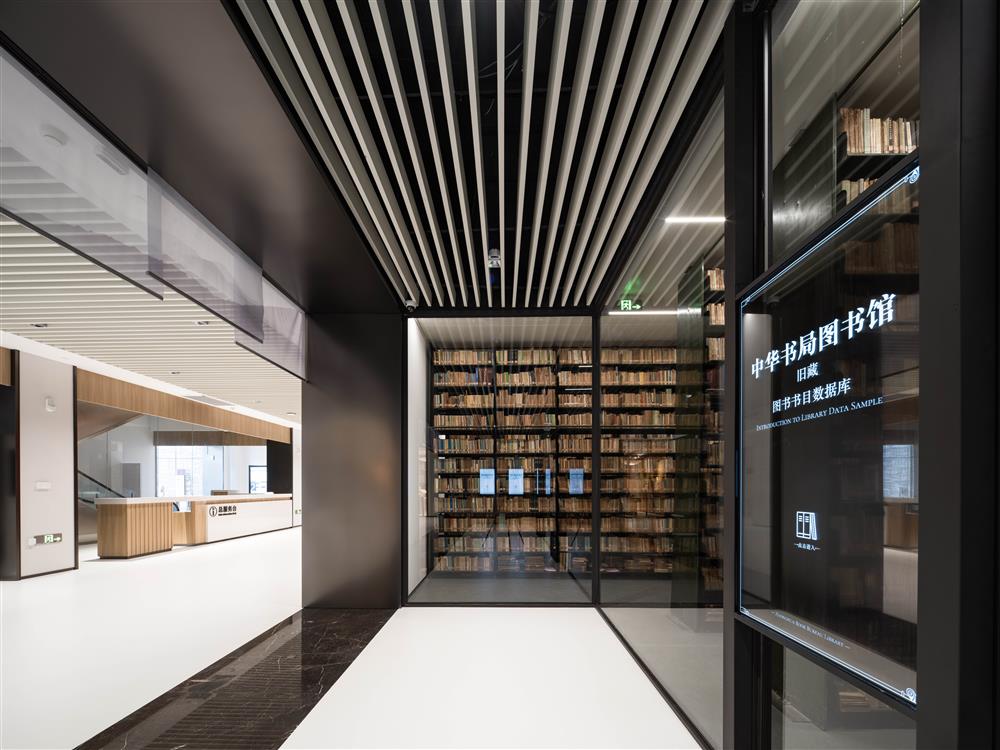
"The Library of Zhonghua Book Company has witnessed the arduous and tortuous development path of China's modern and contemporary news publishing industry, as well as the mission and patriotism of Chinese modern and contemporary news publishers in the era of great changes." Wang Chen, Deputy Director of the Museum of Modern and Contemporary News and Publishing of China, introduced that in order to make the old collection of books "come to life", the museum digitized the collection and included it in the sorting work from the beginning of receiving the old collection of Zhonghua Book Company Library, collecting and compiling data to achieve the permanent preservation and sustainable inheritance of the old collection of books. Visitors can use the touch screen installed on the exterior wall of the library to search for old collections of books and engage in conversations with century old archives.
Old Collection Library of Zhonghua Book Company
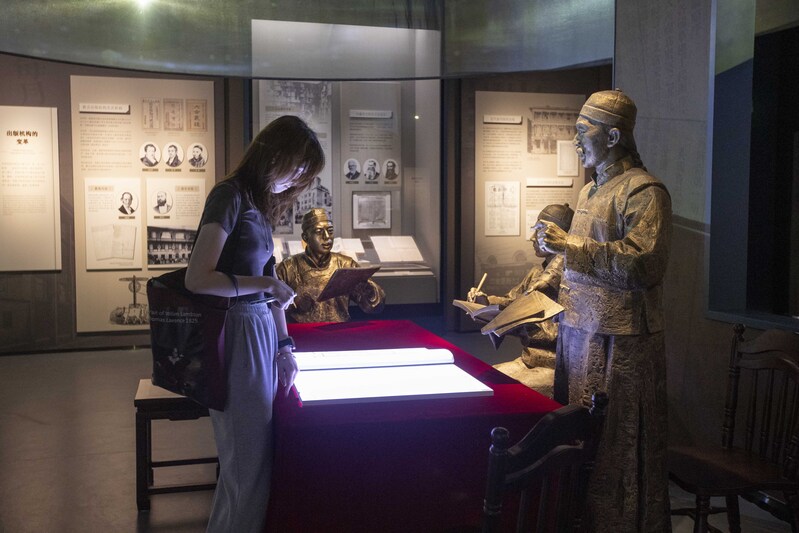
A flowing "cultural street" and a century old stone printing machine that can still be used
Shanghai is the birthplace and center of China's modern press and publishing industry, as well as the starting point of the publishing industry of the CPC. Entering the second floor, the theme hall is of utmost importance.
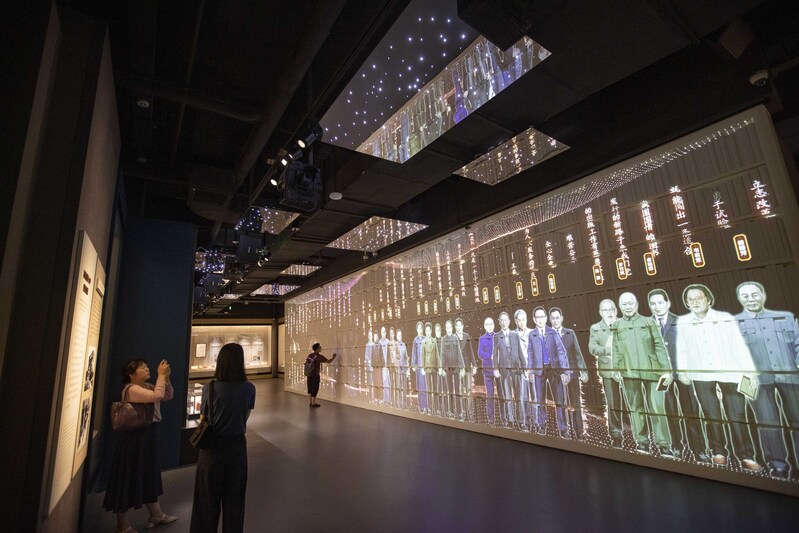
Traditional Chinese publishing mainly relied on woodblock printing, and the first book to be typeset with Chinese lead movable type quietly emerged in the early 19th century. The news and publishing industry began to undergo revolutionary changes in printing technology, text content, carrier form, and management system. More content can be disseminated more widely in a shorter period of time, giving rise to modern journalism and publishing industries. After the New Culture Movement, the news and publishing industries continued to transform from tradition to modernity, and publishing institutions emerged like mushrooms after rain. The Party's publishing institutions were also born in Shanghai during this period, writing a colorful page.
Photo by Lai Xinlin at the Theme Museum
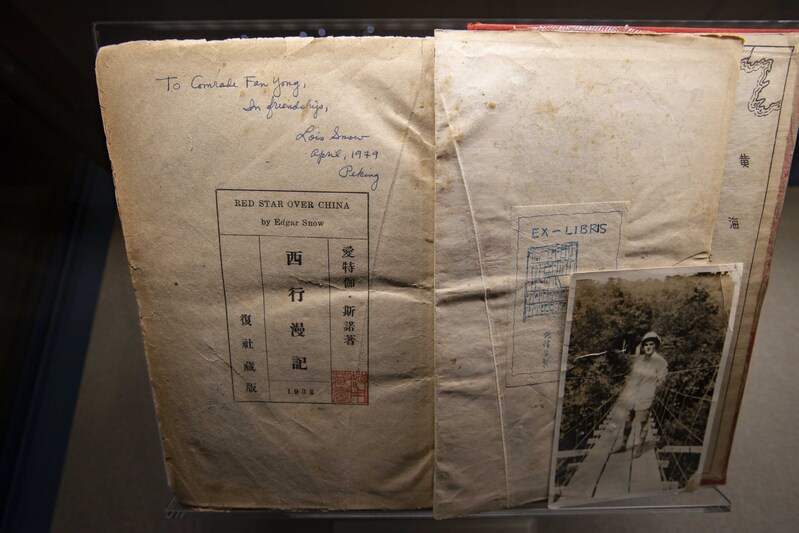
The theme museum opens with the "Eastern Dawn" art installation film, summarizing the main storyline of China's modern and contemporary news and publishing history, presenting the magnificent development history of China's news and publishing industry from the "Western Learning Eastward" in the late Qing Dynasty to the 20th National Congress of the Communist Party of China. Among the more than 200 cultural relics exhibited, in addition to rare publications such as the "New Treatise on the Whole" by the Mohai Library, the "Physical Education Atlas" by the Meihua Library, the "Gezhi Compilation" by the Shanghai Gezhi Academy, and the early published "Shen Bao", there are also important collections such as the inaugural issue of the "Xiangjiang Commentary", the "Journey to the West" signed by Mrs. Snow with Snow's photo, the commercial press's new book advertisement, the contract between Lu Xun and the Life Bookstore, and the representative certificate of Fan Yong's participation in the first National Publishing Conference, many of which are exclusive treasures. At the beginning of the museum's preparation, the first collection collected was a handwritten inscription by Ba Jin, donated by the Shanghai Printing Co., Ltd. of the Commercial Press, for the centenary celebration of commerce. The inscription read, "I am a May Fourth child, and I have entered the literary world through the Commercial Press's' Novel Monthly Report '.".
Photo by Lai Xinlin of the Theme Museum Collection
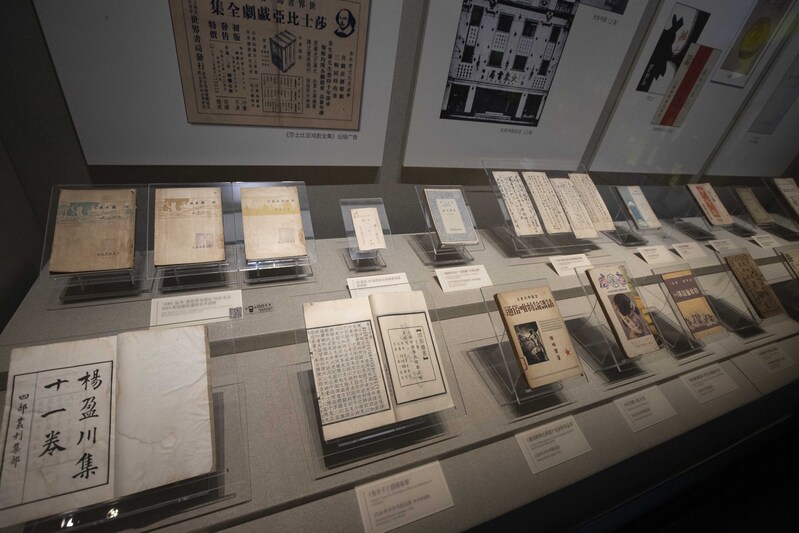
The party's red publications occupy an important position in the exhibits. The few surviving "New Youth Series" is an important publication of our party during its founding period, which is displayed as a whole in the theme museum. The inaugural issue of the Communist Party, the Guide, and Liberation, as well as the publications of the Shanghai Bookstore in the early days of the founding of the Communist Party, such as "Historical Materialism" and "Young Workers' Issues", are also important witnesses to the early publication of the Party.
Photo by Lai Xinlin of the Theme Museum Collection
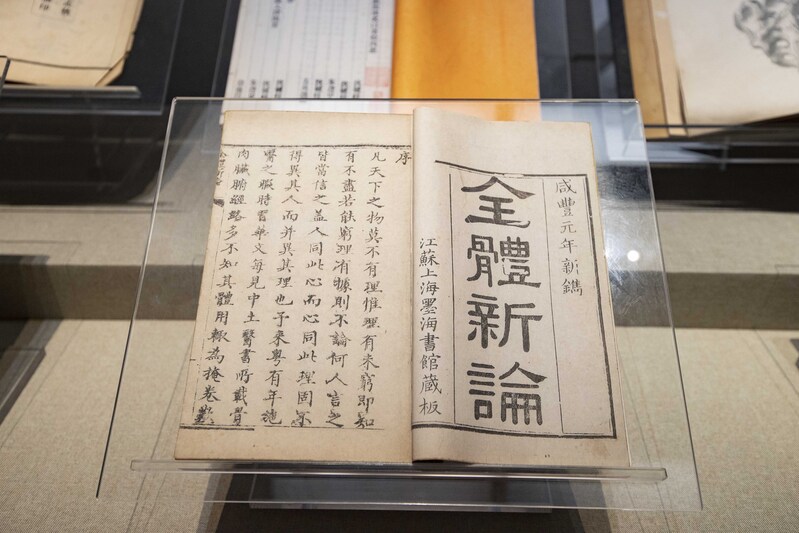
Among the theme museums, the most eye-catching one is the huge three-dimensional projection of Shanghai Cultural Street in the early 20th century. In terms of three-dimensional architectural design, the Shuguan and Baoguan streets centered around Fuzhou Road and Shandong Middle Road in the early 20th century were projected onto them, with people flowing. Visitors can enter the scene and interact with news publishers by scanning the QR code on their mobile phones, experiencing the day and night grandeur of the Cultural Street at that time.
Zhang Xia, Deputy Director of the China Museum of Modern and Contemporary Press and Publication, introduced that the second part of the theme museum exhibition has a special oral history screening hall. Since its preparation, the museum has interviewed news publishers more than 500 times, with a cumulative video and audio duration of about 6000 minutes. This year, we have signed a cooperation framework agreement with the China Academy of Press and Publication, and will gradually release the results of oral interviews between both parties in the screening hall. The third part of the exhibition features a special exhibition wall featuring manuscripts, letters, and archives, showcasing more cultural relics in a limited space through multimedia touch screens. Here, you can see the initial version of "Qun Xue Xue Xue Yan Yan Yan Yan Yan Yan Yan Yan", which is the earliest known copyright stamp in China.
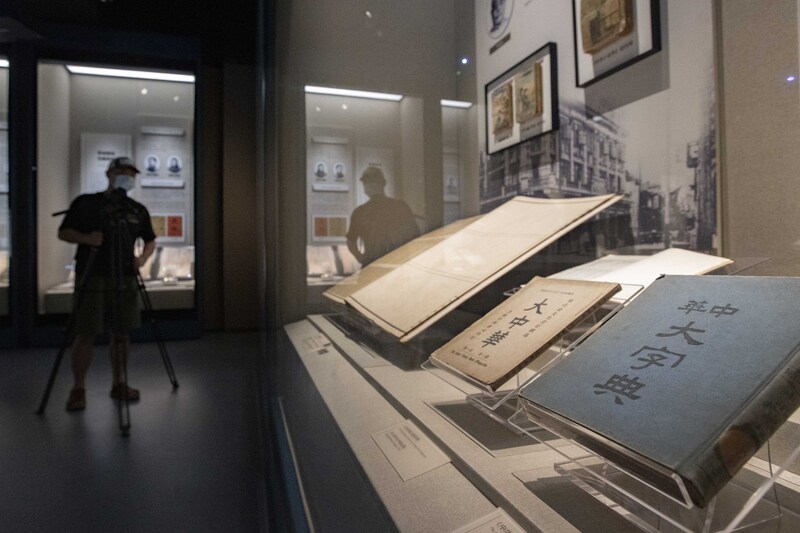
Not only physical treasures, modern technology provides more dimensions of knowledge space
Another treasure of the museum is displayed in the Printing Technology Museum on the third floor. This is a lithography machine introduced to China in the 1870s, measuring 4 meters in length and weighing 4 tons. After repair, this stone printing machine from over a hundred years ago can still operate normally. There are also Chinese typewriters and oil printers from the early 20th century in the printing house, as well as gravure engraving tools used for printing money. Among them, the 1910 colorful stone printed "Nanyang Quanye Conference Venue Map" by the Commercial Press and the Xu Tianchi Flower Collar Plate are particularly rare.
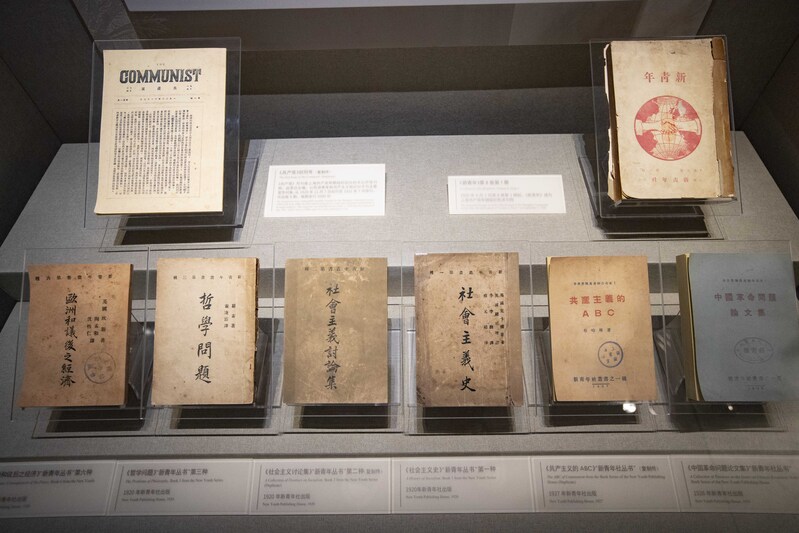
Printing Technology Museum
The museum fully utilizes the latest display methods such as 3D Mapping and naked eye 3D, as well as digital technology. Numerous interactive devices allow the audience to have an immersive dialogue with the exhibition items. Entering the lobby of the exhibition hall, naked eye 3D technology unfolds a long history of news and publishing. The third floor "Digital Technology Restores Grottoes" presents a panoramic view of the 38 Kizil Grottoes located in Xinjiang, along with the most exciting mural parts of the 17 Grottoes and the dome of the Kumutula Grottoes. The Kucha culture is a precious historical relic of Chinese civilization. Shanghai printers use 3D scanning, data processing, and modeling of caves to achieve high-definition image data collection, image processing restoration, and image output reproduction, realistically restoring the overall structure of caves and mural colors. While appreciating the millennium old digital mural art, the audience is able to experience the artistic charm of "printing is omnipotent".
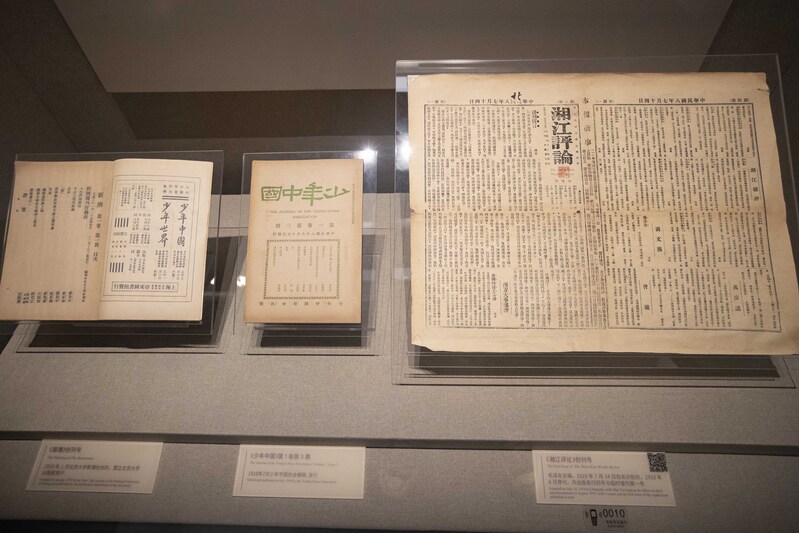
"Digital Technology Restores Grottoes" by Lai Xinlin
The "Looking Back at the Radiant" Children's Publishing House tells the development history of children's books over the past century, featuring interesting interactive experiences. Ring screen projection "Centennial Children's Book" uses the mythical image of Paper Cuttings effect to string the classic images in the centennial children's book; "100000 Whys" The Wonderful House uses hexagonal mirrors to create a cool visual effect, where children can see "Whys" from different eras; The balloons in Children's magazine and the wheat fields in the story of Scarecrow are both realistically restored in the museum.

"Looking Back at the Brilliance" by Lai Xinlin from the Children's Publishing House
The fourth floor "Time Traveling" Digital Publishing Hall, as the name suggests, is characterized by "digital" and introduces the development history of digital publishing in China through 3D Mapping, multimedia touch screen interaction, and other means. The art and design museum has used nearly 200 exhibits to showcase the works of nearly 300 designers who are hidden behind publications. The museum displays font design manuscripts, comics, woodcut prints, comics, New Year paintings, promotional posters, as well as works that have won international awards such as the world's most beautiful book.

Photo by Lai Xinlin from Digital Publishing House
Find out where this hand-painted page of Jiefang Daily is taken by Lai Xinlin.
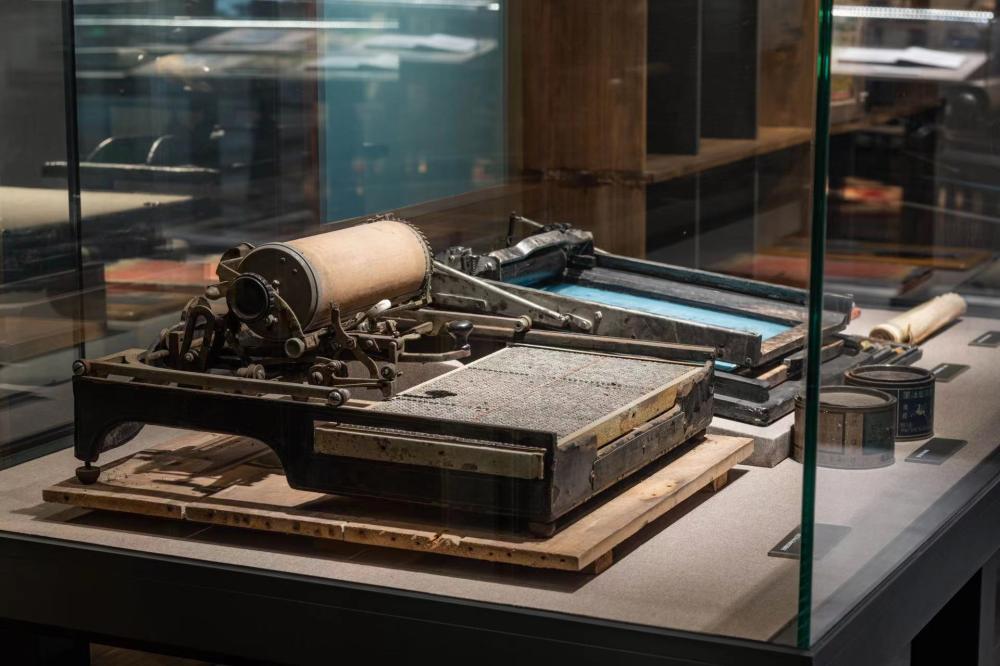
The fifth floor "Voice of the Times" Audiovisual Publishing House uses time as a clue, showcasing the development history of China's century long audio-visual publishing industry through representative people, objects, events, and the evolution of audio-visual carrier technology. Visitors can pick up the earphones of "Shanghai Street Phonograph Stalls" and experience the way people listened to music in the early 20th century. The museum displays the first edition album of "March of the Volunteers", the Mandarin phonograph film recorded by Zhao Yuanren, the first batch of medium density records "Yellow River Cantata", as well as famous songs such as "Four or Five Flower Caves" and "Fisherman's Light Song". The four sided vinyl record wall uses different recording media such as coarse grain, medium density grain, large density grain, and thin film to showcase popular golden songs, pear garden opera, red songs, and famous songs. Visitors can listen to the sound of time travel through headphones.
Audio Visual Publishing House

Zhao Shulei, the director of the China Museum of Modern Press and Publication, introduced that unlike traditional one-way communication, the museum focuses more on achieving two-way interaction between visitors and content, providing visitors with more dimensional knowledge space and greater convenience through modern technology. It is worth looking forward to the launch of a 5G based smart museum project. The system is based on the positioning and core business of museums, integrating information such as collection resources, news and publishing industry historical materials, and industry statistical analysis. It will be applied in three major fields: smart services, smart management, and smart protection. By creating digital museums and smartphone guides on mobile terminals, it will bring visitors a new exhibition experience in the digital era.
Yangpu District has a rich heritage of universities and industrial resources, with a unique historical resource of "century old university, century old industry, and century old municipal governance". According to the plan, the China Modern Press and Publication Museum will implement integrated development with the surrounding digital media industry base. The Municipal Party Committee Propaganda Department actively supports the landing of various resources and cultural activities in the publishing system in Yangpu, promoting the formation of a national level digital media industry base, and supporting the construction of Yangpu District as the first place for brand products and brand activities in the news and publishing industry in Shanghai and even across the country.

"Yangpu District is the first place where the concept of" People's City "is proposed. Museums will fully cooperate and win with local areas, open their doors to museums, and introduce more excellent content resources into communities, parks, and campuses, further amplifying their value, function, and influence, becoming a good place for citizens' homes, and striving to build a model for cultural revitalization and inheritance." Zhao Shulei said.
[Extension: Realizing the Long cherished Wish of Several Generations of News Publishers]
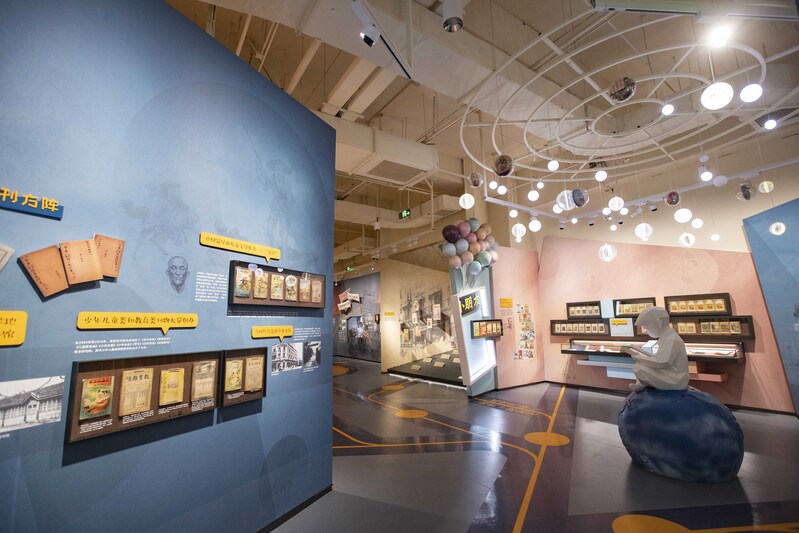
Shanghai is the birthplace of China's modern news and publishing industry. According to statistics, from 1912 to 1949, over 80% of the country's publishing institutions, with over 300, were concentrated in Shanghai; More than a thousand books included in China's modern and contemporary academic masterpieces, nearly 95% of which have been published in Shanghai for a century. Shanghai's news and publishing industry has been shining with stars such as Zhang Yuanji, Lu Feikui, Shi Liangcai, Hu Yuzhi, Zou Taofen, Ye Shengtao, Zhao Jiabi, and many others.
Shanghai is an important base for red publishing. In August 1920, the first fully translated Chinese version of the Communist Manifesto was printed and published in Shanghai. On September 1, 1921, shortly after the founding of the CPC, it established its first publishing organization in Shanghai, the People's Publishing House.
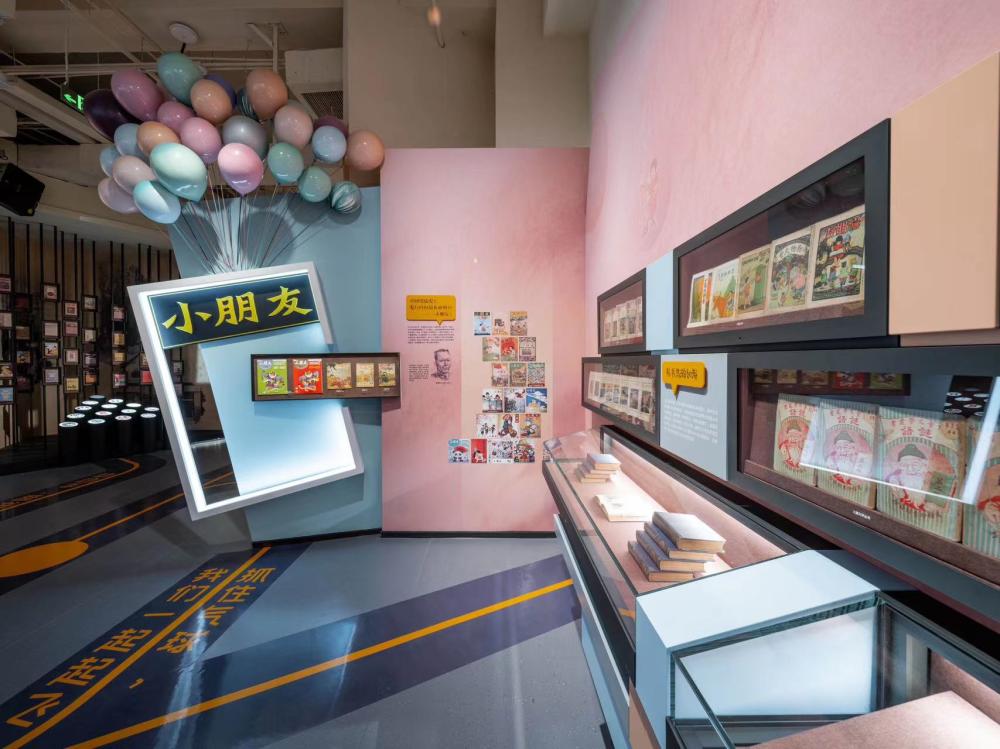
Shanghai should have a news and publishing museum that is commensurate with its glorious history and status. This is not only a long-standing appeal of National People's Congress and CPPCC members, but also a long-standing aspiration of news publishers across the country. As early as 2001, members of the Chinese People's Political Consultative Conference proposed the construction of a publishing museum in Shanghai. Since the establishment of the museum construction leadership group by the Shanghai Municipal Bureau of Press and Publication in 2003, the preparation of the China Modern Press and Publication Museum has gone through twenty years of ups and downs.
In 2008, the General Administration of Press and Publication of China and the Shanghai Municipal People's Government signed the "Ministerial Cooperation Framework Agreement", initially reaching a cooperation intention of "striving to jointly build the China Publishing Museum". In October 2011, the General Administration of Press and Publication of China approved the construction of a Press and Publication Museum in Shanghai. In November of the same year, the China Museum of Modern and Contemporary Press and Publication was included in the construction project of the 12th Five Year Plan. At the end of 2016, Shanghai released the "13th Five Year Plan for Cultural Reform and Development in Shanghai", and the Press and Publication Museum was listed as a major construction project.

In 2019, the Propaganda Department of the Shanghai Municipal Committee of the Communist Party of China and the Yangpu District Government signed a framework cooperation agreement to jointly build the China Modern Press and Publication Museum, and the museum has since settled in Yangpu. do




